- December 26, 2020
- By Reno Jackson
- In Articles, Guest Post, Meta Reports
- No Comment
- 0
Team WildSide Wild Meta Report (December 2020)
Same old story: Darkglare Warlock, Reno Priest, and the rest. The expansion isn't that impactful, but there are still a fair number of new and returning decks. The nerfs has impacted Demon Hunter and Druid moreso than any other classes.
We would like to thank these top legend players who have given us their expert opinions and helped with writing the report: RenoJackson, matSund, Goku, Faguoren, Memnarch, Soda, Cubyyy, xtuliop, and Duwin. Their Twitters are to be listed at the end of the report.
We would like to give a huge shoutout to our patrons for making this possible. If you really like the report and want us to keep going, please consider becoming a Patron here: https://www.patreon.com/thewildside
To get updates on all our future reports, consider joining our Discord server The Wild Side: https://discord.gg/FVZgtVs
Welcome to the sixth Edition of Team WildSide’s Wild Meta Snapshot for 2020! We are teaming up with Hearthstone-Decks to provide you the most accurate Wild report possible.
In this meta report, we will be going through a tier list of 58 decks we’ve seen frequently on ladder, explain the method of computing the tier list, break down the meta and analyze the decks as detailed as they need to be. In this report, we have included a Meta Ranking and will be further discussing the state of each class in terms of power and diversity. Also, we’re including some WildSide special decklists that were made by none other than our experts!
METHOD
We collected our experts’ opinions through a spreadsheet, where our Top Wild legend players will rate the given decks with a corresponding score from 1 to 4 in increments of 0.5 (with 1 being top Tier 1 and 4 being bottom Tier 4). We then collect the result, standardize and categorize them in 4 different Tiers. This is what they mean:
Tier 0 (Absolute oppression)
The one deck to beat. You either play it or play decks that can beat it.
Tier 1 (Meta-defining)
Highly-optimised decks with extreme raw power that are very well positioned in the meta.
Tier 2 (High-legend viable)
Competitive decks that are not as well-rounded, but can snatch games off of Tier 1 decks or prey on their direct counters.
Tier 3 (Legend-viable)
Fringe decks that can succeed in the right meta, but are either suboptimal or outdated.
Tier 4 (Average)
Decks at a weaker power level that require an extensive understanding to be able to pilot well, but are not recommended for ladder experience.
Tier 5 (Meme)
Decks that aren’t typically played for the purpose of climbing ladder, but still have a decent enough presence to be included in the report.
Within each tier, decks are categorized to either High tier, Mid tier or Low tier to further differentiate their power level.
For Meta Ranking analysis, we allocate points to each deck from Tier 0 to Tier 3 then sum them up. The point system for rating a single deck is as below:
Tier 0: 22
Tier 1: 18 (High), 15 (Mid), 12 (Low)
Tier 2: 9 (High), 7 (Mid), 5 (Low)
Tier 3: 3 (High), 2 (Mid), 1 (Low)
Each deck is also assigned a popularity ranking and a respective coefficient multiplier based on its popularity. The highest multiplier is 12 and the lowest is 7. For example, if Odd Paladin is High Tier 1 and has a multiplier of 12, it will bring the class an additional 216 points.
Therefore, a class can be placed highly on the Ranking system based on one (or both) of these elements: having a few strong decks (deck power) or having many decks (class diversity). If classes share the same score, the class with more top decks will be ranked higher.
REMARKS
Darkmoon Faire isn’t as powerful a set as Scholomance Academy is, and this has certainly reflected in the state of the meta. Most of the top decks didn’t change much due to the slight upgrades they got, and the newer ones are nowhere near powerful enough to topple the top dogs off their places.
Highlander Priest, Darkglare Warlock, and Aggro Druid remains the trifecta at the top, defeating each other in a rock-paper-scissor fashion. All of these decks have gotten at least one slight upgrade to keep them where they are for another cycle. These decks win games very effectively, and with the case of the top Tier 1 decks, they’re also very difficult to counter.
There is a crop of ‘new’ decks sneaking up the ranks; that is, if one can call Secret Highlander Mage, Big Priest, Odd Demon Hunter, and Aggro Rogue new. These decks have all gotten fairly substantial upgrades from Darkmoon Faire, but weren’t able to sneak into Tier 1 since they weren’t very strong before the expansion. However, they still have strong influences over the meta. Novel decks are naturally overplayed due to being new (or having an existing fanbase, like Big Priest). This skewed playrate has led to some decks performing better than others. The rise of Big Priest, for example, paved the way for Malygos Druid to come back, while simultaneously hampering Odd Paladin’s performance.
If you’re looking for completely new decks, then Control Tickatus Warlock and OTK Warrior are performing better than expected, while Silas Mill Druid and Secret Hunter haven’t lived up to the hype. This isn’t anything unexpected; as the meta gets faster and more developed, slow decks need to be much more resilient to reach their win conditions. The ones that survive are the ones able to do so.
The recent balance changes have made a small but noticeable impact on the meta. Aggro Druid becomes a bit weaker with the Voracious Reader change, but the card is now a possible inclusion in decks like Odd Demon Hunter. Lorekeeper Polkelt remains a staple in Highlander Priest, but the increased cost means that it will take a bit longer to find your Raza and Spawn of Shadows.
TIERLIST
This is a single screenshot taken from our spreadsheet if you find the tierlist infographics too long (you can open the photo in another tab to see the full-sized picture).
TIER 1
HIGH
Darkglare Warlock
Ranked: 1 (0)
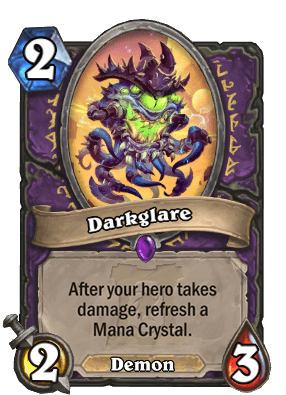
Darkglare Warlock is a self-damage aggro deck with Darkglare serving as the centerpiece. Darkglare allows for plenty of mana cheat that allows the deck to swarm the board with minions as early as turn 2. Molten Giant and Flesh Giant are the big payoffs for damaging yourself, and are often paired with Animated Broomstick to take control of the board or with Loatheb and Cult Neophyte to lock out any response.
Even with a reworked core, Darkglare Warlock is immorally strong. The highroll does get a bit weaker, but sometimes you can get online faster against Aggro. And it’s not too hard to lock Control decks out of the game, especially when you employ new cards to buff up your small board and force the opponent to spend clears on them.
Since Darkglare only returns 1 mana when you damage yourself, all self-damage cards are now 1 mana so they can be played for free. An interesting development has been the Flame Imp cut for other self-damage cards like Rain of Fire or a mini-Discard package to react to aggressive boards better. Revenant Rascal is being tested alongside Neophyte and Loatheb as yet another way to ensure your board sticks, but it doesn’t seem very promising.
Darkglare Warlock is still faster than many Aggro decks and can counter Control decks very well, which is why Nerub’ar Weblord is still a premium tech choice in decks like Aggro Druid or Even Shaman. With main counters like Aggro Druid and Odd Demon Hunter leaving the scene and main competitor Reno Priest kept in check with Polkelt nerfed, Darkglare Warlock is once again primed to become the best meta deck. The only setbacks for the deck is its slower start versus Aggro and players not piloting the matchup against Secret Mage correctly.



Combo Reno Priest
Ranked: 2 (0)
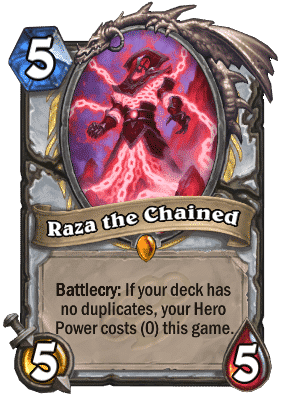
Combo Reno Priest is one of the most iconic decks in Wild Hearthstone. Popularized after the introduction of Shadowreaper Anduin, Combo Reno Priest assembles its combo by reducing its hero power to 0 with Raza the Chained and combining it with many cheap cards. Combo Reno Priest either plays Spawn of Shadows or Prophet Velen as its finisher, and it utilizes plenty of draw to get there.
When you thought it’s not possible for Reno Priest to get any stronger, it got stronger. Palm Reading and Insight are such powerful tools that they immediately go into every slow Priest decks. Palm Reading enables a much smoother AOE curve with Turn 4 Mass Hysteria and Turn 6 Psychic Scream, as well as boosting the damage ceiling in a Spawn of Shadows turn. Insight is just a very solid draw card in general. Some decks are tinkering with G’huun who draws key cards after Lorekeeper and reduces their cost to 0, but it might be too heavy a card which isn’t that good when the Lorekeeper is played Turn 5.
Although Blizzard has denied Reno Priest from being the strongest deck with a Polkelt nerf, it still remain extremely strong given the Big Priest heavy meta. Though Big Priest isn’t the best matchup in the world, it pushes key counter decks like Odd Rogue and Bomb Warrior out of the meta, leaving only Malygos Druid and Galakrond Warrior left as consistent counters. In its current form, it’s unimaginable to think of the day Reno Priest is leaving Top Tier 1.


MID
Secret Mage
Ranked: 3 (+13)
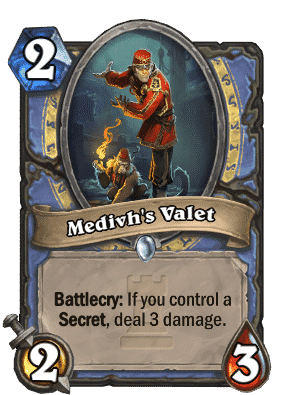
Secret Mage is an aggro deck that seizes board control in the early game by playing discounted secrets that disrupt the opponent’s gameplan. The deck has the ability to both tutor secrets and deal direct damage, while Aluneth provides a way to constantly keep up the pressure and close out games.
Secret Mage didn’t get as big a buff as Highlander Secret Mage, but it’s actually the better performer in the meta right now due to access to twice the amount of burn and good secret. Together with the Highlander version, Secret Mage saves Jaina from an otherwise disappointing expansion.
Rigged Faire Game has given the deck extra card draw and is easily found with the variety of secret tutors that Mage has. Occulent Conjurer has been another great addition giving the deck a stronger midgame then it had before. Sayge, Seer of Darkmoon has given the deck even more card draw and feels like Aluneth on a body but without the weakness of continuing to draw and losing to fatigue damage. Because of the abundance of draw, players have cut Aluneth, which is something unthinkable just an expansion ago. Another staple secret, Counterspell, now only sees play as a single copy, which is a testament to how tight the list has become. But as we learned with Reno Priest, we know a deck is good when you have too many good options to choose from.


Odd Paladin
Ranked: 4 (+5)
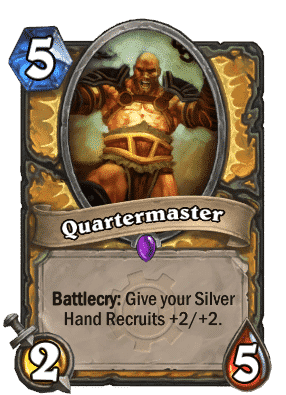
Odd Paladin is an aggressive-midrange deck which gets its name from playing only odd-costed cards. Powered by Baku the Mooneater’s Start of Game effect, the Paladin can summon two 1/1 recruits at any stage in the game. This gives the Paladin an incredibly consistent board presence that synergizes with cards like Quartermaster, Warhorse Trainer, and Steward of Darkshire.
The formula of consistency + turn 1 highroll works particularly well in Odd Paladin, especially when the deck has access to Righteous Cause and Tour Guide to potentially vomit 10/10 worth of stats on Turn 2. To wholly focus on the token generation gameplan, decklists have included the new Carnival Barker which spawns more aggressive minions than Steward of Darkshire, as well as Lothraxion which is a great boost against Control (although he might be a tad slow). However, the biggest gain for Odd Paladin in this expansion is Oh My Yogg, which acts as a Counterspell very often to prevent losses.
There are some setbacks that prevent Odd Paladin from being at the top of the tier list, however. Unlike Odd Rogue, Odd Paladin no longer has a Highlander disruption like Beneath the Grounds after the Bad Luck Albatross nerf, which means Reno Priests are still happy to devour the Paladin alive for supper even with Lothraxion. Other slow decks like Druids, Big Priest, and Cubelocks are much happier dealing with a consistent stream of tokens than direct damage (Odd Rogue, Kingsbane Rogue) or Turn 1 blowouts (Aggro Druid). Nevertheless, Odd Paladin is a very strong option for laddering, as its performance never falls too low even for unexperienced pilots.


LOW
Kingsbane Rogue
Ranked: 5 (+5)
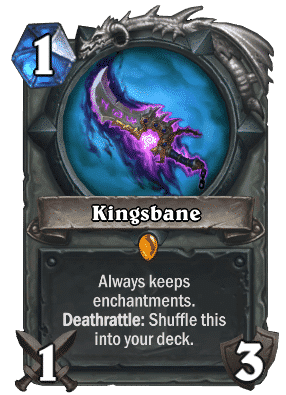
Kingsbane Rogue is a deck that revolves around buffing and redrawing its namesake card, Kingsbane, to create a high-attack weapon that will inevitably end the game. Kingsbane Rogue used to play a Mill package with Coldlight Oracle, but after the nerf to Leeching Poison, it has switched to an early aggressive Pirate package.


TIER 2
HIGH
Aggro Druid
Ranked: 6 (-2)

Aggro Druid is a typical Aggro deck that aims to win very early on by playing very cheap and efficient minions. The deck can fill the board really quickly and end the game with board buffs like Power of the Wild and Savage Roar. The most recent versions also use Embiggen to pump overstatted minions on board.
Aggro Druid has evolved into one of the most highrolly decks in the game. In a sense, it’s like a mini-Darkglare Warlock that goes off much earlier, around Turn 1 or 2. Either you clear the board by then, or you die a horrible death. With the inclusion of Gibberling, the Druid player can fill the board much earlier using a few spells, namely the new Adorable Infestation. Embiggen is still kept for free 3/3 Patches and 4/4 Parachute Brigands, and the rest of the deck is still pretty much the same.
While very weak into different flavors of Control Warlock, Aggro Druid is serviceable against most other classes. It floods the board ridiculously early, and some decks simply don’t have the tools to deal with that kind of opening. On top of this, it naturally plays counter cards like Nerub’ar Weblord and Cult Neophyte without sacrificing early game power (although many have cut these for cards like Intrepid Initiate after Darkglare is gone). The new Wriggling Horror definitely deserves a spot in this deck, as it’s a Fungalmancer that only costs 2 mana.
However, the deck has gotten a huge blow with the nerf to Voracious Reader. The deck had a big problem refilling before Reader came along, and now it’s facing the same problem again. Reader is just a little too slow for what Aggro Druid is trying to do, so the deck has been pushed from Tier 1 to Tier 2 from a single card nerf. Its playrate on ladder is too low to properly judge the power level after nerf, so we might have to pull it further down the drain going forward.

Discard Warlock
Ranked: 7 (-2)
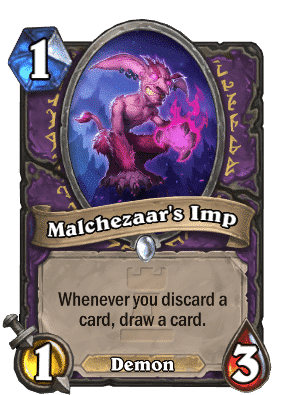
Discard Warlock is an aggro deck that aims to generate tempo through Discard synergies. While Discard cards typically sacrifice hand resources for immediate tempo, cards like Silverware Golem and Hand of Gul’dan can effectively negate these downsides. As such, the Warlock can create huge boards very early on, while Doomguard and Soulfire provide damage to finish off the game.
Discard Warlock is an extremely solid deck that refills its hand really well. It’s not often we see an aggro or midrange deck maintaining a hand-size of 7 to 10 cards until it draws its whole deck on turn 8. This specific strength makes Discard one of the best aggro decks into slow control, and allows it to run other aggro decks out of steam. In the past, the deck has often relied too much on constant stream of damage to finish the job, but with the introduction of Wicked Whispers, it has more way to blow the opponent out of the water very early on.
However, Discard Warlock can easily lose board against faster aggro decks. This is where the now-nerfed Darkglare comes in. It works like a Mechwarper for demons, and Mechwarper yells TEMPO. Darkglare helps you get on board and helps you recover lost tempo, just not to the insane degree as before. But at 2 mana, it’s easier to just slot the card into the deck without it being the centerpiece.


Odd Rogue
Ranked: 7 (-4)

Odd Rogue is an aggressive-midrange deck that gets its name from playing only odd-costed cards. Powered by Baku the Mooneater’s Start of Game effect, the rogue gains access to a 2/2 weapon at any stage in the game. This gives the rogue an incredibly consistent damage output and early board control, and allows it to play a variety of synergistic Weapon and Pirate cards.
Odd Rogue has received no new cards this expansion, with the only semi-viable inclusion Ticket Master being a gimmick at most. As Odd Rogue relies on its weapon more than ever now, Big Priest and Big Shaman can really give it a hard time on ladder.
However, with Vulpera Toxinblade and Deadly Poison, Odd Rogue is still a consistent choice for a fast legend climb. An early Tour Guide can certainly chuck in some serious damage while allowing the Rogue to develop a board with tried-and-true minions like Hench Clan Thug. Secret Passage and Cutting Class provide the deck with some much-needed refill after such a strong early game. This playstyle feels more akin to the golden age of Baku when Cold Blood was still 1-mana, and is a step up from the minion combat heavy versions with Magic Carpet and/or Southsea Captain. Odd Rogue loses more heavily to swarm decks like Odd Paladin now, but let’s be frank, you don’t play this deck to beat Paladins.
More damage means that Odd Rogue can beat slow decks more consistently, but that’s not the number one reason to sport the deck. Odd Rogue is superior to Reno Priest when facing them head-on. The combination of unlimited damage and Beneath the Grounds often prove too much for the Priest to overcome.


Secret Highlander Mage
Ranked: 9 (+8)
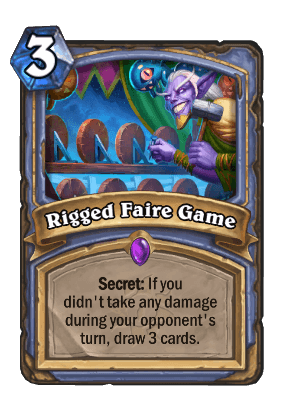
Secret Reno Mage is a variant of Secret Mage. It seizes control of the board in the early game by playing discounted secrets along with highly synergistic secret build-around cards. In addition, the deck also runs Highlander cards to gain access to extra burn, board clears, and health gain.
Highlander Secret Mage is among the decks that received the most massive buffs in Darkmoon Faire, and it’s certainly shown its effectiveness. Unlike Secret Mage that couldn’t make use of all new Secret cards like Game Master and Inconspicuous Rider, Highlander Secret Mage welcomes these new cards to beef up its consistency while still retaining its Highlander power spikes.
Reno Secret Mage has been a deck we have seen before but has not had its chance to shine. With cards like Rigged Faire Game, Sayge, Seer of Darkmoon, and Occult Conjurer, the deck has finally started to feel like it has amassed the proper amount of cards to support a highlander build. The reason to consider Reno Secret over Secret is the powerful effects of the highlander cards giving you a better chance into Aggro and additional answers for various situations you might be presented with. Like its Secret cousin, Highlander Secret Mage has cut Aluneth, which is more than understandable. The deck has always had a much beefier curve than its non-Highlander counterpart and there’s no reason to play more draws now Sayge is a card.
Before Polkelt nerf, he was a good Turn 4 play that draws into good end game cards like Reno or Sayge. However, unlike in Galakrond Warrior where a 5 mana Polkelt can still end the game with a timely Galakrond draw, Secret Mage doesn’t have as many attractive top end. Now Polkelt is a rather slow play that isn’t worth the tradeoff, and should be cut accordingly. We haven’t been able to gather lists after the Polkelt nerf, but feel free to sub him out for something else.



Highlander Warlock
Ranked: 10 (+7)
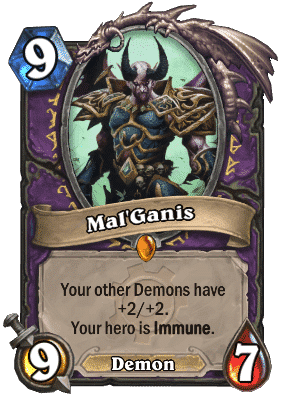
Reno Warlock is a Highlander deck that relies on not having duplicate cards to activate power spikes such as Reno Jackson, Kazakus, and Zephrys the Great. The Warlock core is different from other Reno decks in that it usually revolves around Demon synergies. There is a multitude of ways to build Reno Warlock, but not every Highlander Warlock will be listed under Reno Warlock. A Reno Warlock deck is listed under Renolock if the Highlander cards are a crucial part of their gameplan.
Highlander Warlock has been decent all along, and it looks like the playerbase has only realized it now. The deck has always been better than Cubelock versus Aggro, and a faster meta such as this one is the perfect environment for it to thrive. Another reason for Highlander Warlock’s success is also its ability to tech against Priest with various cards (Finley combo, Tickatus, Gnomeferatu) and its less terrible game against Secret Mages.
Renolock got a nice upgrade this expansion with Tickatus allowing the deck extra mill to help it out last control matchups or disrupt combo decks. Cards like Sense Demons help find Ticktatus and plenty of value late game cards help triggering Tickatus’ corrupt effect. However, some people are claiming that Ticktatus isn’t even worth it, and Renolock actually functions better without the clunky 6 mana demon.

Malygos Druid
Ranked: 11 (+6)
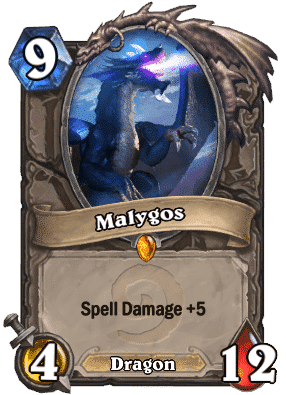
Malygos Druid is a combo deck that revolves around cheating Malygos onto the board and dealing overwhelming damage to the opponent. The typical Druid ramp and armor gain carry it through the early game before it assembles its combo with Juicy Psychmelon and Jepetto Joybuzz.
Malygos Druid is that deck that always rises and falls with the meta. And in the meta where you see many Big Priest, Reno Priest, and Highlander Warlock such as this one, it’s once again a top-notch combo deck.
Malygos Druid has seen almost no changes with the launch of Darkmoon Faire, the only exception has been experimentation with Guess the Weight. Guess the Weight replaces Sphere of Sapience in the deck, assisting in early game card draw and helping dig for combo/ramp pieces.
Malygos Druid has a much better game against Big Priest than other Combo Druid variants since it can actively finish the opponent off. With the addition of Lightning Bloom, the deck’s sole focus is on comboing as soon as possible. Along with crazy ramp potential, it’s an excellent choice against slower decks. Unfortunately, its matchups vs extremely aggressive decks have not changed, and the bounce back of Darkglare Warlock and Secret mage has weakened the decks capabilities in the metagame, so it should only be played as a niche pocket meta aiming to counter Raza Priests and Reno/Cube warlocks.

MID
Big Priest
Ranked: 12 (RETURNING)

Big Priest is a beatdown Control-esque deck that relies on cheating out their few huge minions in the deck using Shadow Essence, then reviving them with cards like Resurrect and Eternal Servitude. The deck plays a very reactive game until it can play its big minions, before switching to a tempo-based mid-game and value-based late-game.
The boogeyman is back, and he’s scarier than ever. Big Priest is arguably the most supported deck in Wild in Darkmoon Faire, gaining two key cards in Blood of G’huun and Palm Reading. Blood of G’huun is a better Y’shaarj and has managed the unthinkable of pushing Y’shaarj out of a Big deck. Meanwhile, Palm Reading enables a Turn 5 Essence and Turn 6 Psychic Scream, which are much scarier when they’re one turn early.
There’s a definite reason behind the Y’shaarj cut: to shore up the game versus Aggro. With only Colossus, Blood of G’huun, and Vargoth as the only minions, Essence is almost always guaranteed to hit a taunt that generates another Taunt now. This ends the game if the Aggro deck doesn’t have burn lethal or Silence. Big Priest is much more resilient against Aggro now while is still very scary against Control, which makes it a very solid choice for laddering. However, be mindful of this trend: the higher on ladder you approach, the fewer Big Priest you’ll see. This suggests that the power level of this deck might not be as high as people assume.


Control Cube Warlock
Ranked: 13 (-7)
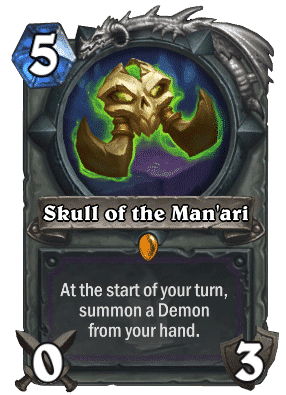
Control Cube Warlock is a specific variant of the Cube Warlock family. This warlock deck plays many slow Deathrattle cards that can gain value from Carnivorous Cube and N’Zoth, the Corruptor. Rather than trying to get on board early, the Warlock defends in the early game with reactive spells like Defile and Dark Skies, before cheating out demons and outvaluing their opponent.
Cube Warlock has not seen any new or recent changes with the release of the Darkmoon Faire expansion, The main package of the deck seems to rely solely on big demons, and less on the Cube/Faceless package the deck used to rely on in the past. Some lists are also beginning and continuing to include anti-combo cards such as Dirty Rat, Gnomeferatu, and Bad Luck Albatross in order to combat the almost impossible matchups vs Raza and Malygos. Decks are also including Animated broomstick in order to proc Voidcaller early, or to combat very aggressive starts from opponents.
Due to the power level of Raza Priest and the re-emergence of Malygos Druid and Darkglare in the meta, Cube Warlock remains in the middle of Tier 2 for our meta report. It still punishes polarizing matchups such as Odd Paladin and Aggro Druid. It remains to be a solid deck in the metagame, however, it has dwindled in popularity due to the power and popularity of Raza Priest.

Odd Demon Hunter
Ranked: 14 (+22)
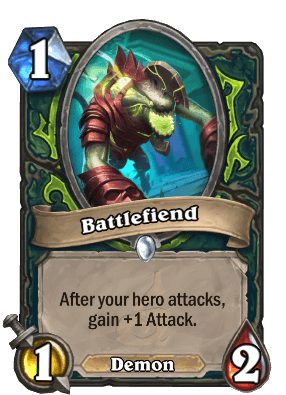
Odd Demon Hunter is a hyper-aggro deck that falls back on its 1 mana hero power to create constant face damage. While it played a higher, more midrange-ish curve before, it’s now transformed into a full-fledged Aggro deck with plenty of one drops, refills, and finishers like Leeroy Jenkins or Twin Slice.
Odd Demon Hunter is another deck that has made an comeback. Acrobatics and Stiltstepper has transformed the way the deck plays out, and for the better. Demon Hunter can now afford to play plenty of fast cards, including ones that were traditionally deemed bad like Mana Burn. The deck can now very consistently hit a strong early game and sends the opponent’s HP to 0 around Turn 4 or 5. It’s a shame that one of the best cards in the deck (Dreadlord’s Bite) was nerfed before it could see the light of day, but the deck is still exciting nonetheless.
Mana Burn is now one of the best tech cards in the deck. It gains tempo on board and locks out the opponent’s key tempo or board clear turns. Before, it was deemed not good enough because you’re essentially operating on one fewer card, but this drawback is negated by the abundance of draws in the deck. However, we actually think that Acrobatics might be a bait card, even moreso now that Reader is ‘nerfed’ and is playable in this deck. Demon Hunter often wins by Turn 5, and a card that does nothing but draws for 5 mana or more might not be good enough. Alternatively, we suggest a small Elemental package, with good Elementals like Fire Fly, Glacial Shard, and notably Gyreworm. You’re going to activate Gyreworm often enough that the mini-package is worth it. Alternatively, you can opt for zero draw apart from Stiltstepper and still keep the nerfed Dreadlord’s Bite for the reach and cleanup versus Aggro.


LOW
Even Shaman
Ranked: 15 (-5)
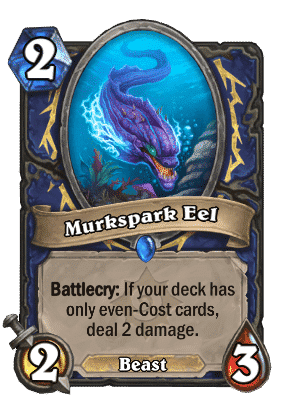
Even Shaman is a midrange deck that gets its name from playing only even-costed cards. Powered by Genn Greymane, the Even Shaman can spam early totems to power up highly-synergistic cards like Totemic Surge, Totemic Might and Thing from Below. The deck capitalises on its flood of totems in the mid-game with cards like Splitting Axe, Draenei Totemcarver, and The Storm Bringer.
Once again, Even Shaman shows up consistently but unspectacularly. The new cards failed to make an impact in the deck, being either odd-costed or unsuitable for the deck’s core competency. The only saving grace for Even Shaman is the recent meta shift towards more aggro, something Thrall welcomes with open arms.
People have talked about how Cagematch Custodian would improve Even Shaman, but the reality is it just makes the deck weaker in the early game. The only weapon it pulls is Spitting Axe, a card that requires you to spam totems conssistently in the first few turns and not play a weak 2 mana 2/2. With no change in the list, Even Shaman is a bit less good against Aggro while folds to any half-decent Control deck that isn’t Druid.


Pirate Rogue
Ranked: 16 (+23)
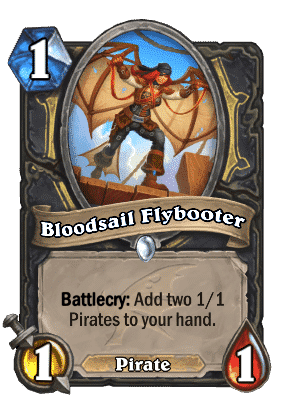
Pirate Rogue is a hyper-aggressive Rogue deck that plays plenty of Pirates to overwhelm the opponent in the early game. It also plays plenty of draws like Secret Passage, Swindle, and Myra’s Unstable Portal to comfortably fish for end game damage.
There are two Rogue archetypes that were given massive boosts this expansion: Pirate Aggro Rogue and Shuffle Rogue. Aggro Rogue already had a fairly solid core before the expansion, and the Foxy Fraud + Ediwn package just allowed it to be even more explosive and consistent in the early game. Pirate Rogue is like an alternative to Aggro Druid that’s less consistent but has a little bit more cheese.
The most popular iteration of Pirate Rogue incorporates a mini Stealth package with Greyheart Sage for even more draw as well as Foxy Fraud to activate Swindle and Hooked Scimitar. One-eyed Cheat acts as a perma-stealth Pirate that activates various synergies in the deck. You can always go more all in and play Shadowsteps and Edwin van Cleef, but you’re trading a ton of consistency for arguably not that much gain in highroll. The Stealth version is probably the way to go at the moment.


Galaxy Highlander Mage
Ranked: 17 (+6)
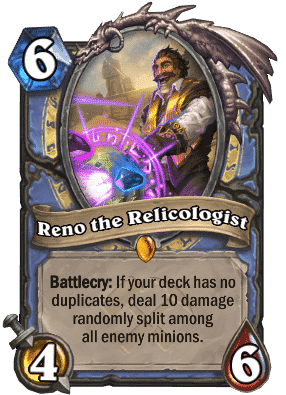
Galaxy Reno Mage is a proactive control deck that relies on not having duplicate cards to activate power spikes such as Reno Jackson, Reno the Relicologist, Kazakus, and Zephrys the Great. Galaxy Reno Mage plays a heavy minion package with Luna’s Pocket Galaxy to overwhelm the opponent with 1-mana, high-value minions in the late game.
Galaxy Reno Mage is a bit clunky into the faster portion of the meta, but is otherwise a pretty well-rounded deck. The Dragon package has been ditched for Lorekeeper Polkelt, who’s become a trend among Reno decks as of late. This change allows the deck to hit its power cards like Tortollan Pilgrim and Pocket Galaxy much more often in exchange for cutting greedier cards like Dragonqueen Alexstrasza and Kalecgos. Some people are testing with Elemental packages and the new N’zoth, but the version that tops at Pilgrim is probably still the way to go.
A major strength of Galaxy Mage is how well it fares against Reno Priest. In this matchup, the most common way for the mage to win is by chaining multiple copies of Loatheb by using Brann Bronzebeard, Zola the Gorgon, Barista Lynchen, or Potion of Illusion. Reno Priest also has a hard time dealing with Ice Block, as it is difficult to get Zephrys to offer secret removal on the Spawn of Shadows combo turn. However, if you happen to queue into Aggro, pray that your highlander cards can get you out of trouble.


Big Shaman
Ranked: 17 (-9)
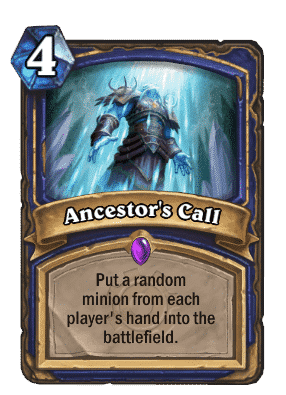
Big Shaman is a control deck that gets its name from cheating big minions. Ancestor’s Call, Muckmorpher, and Eureka! are essential to the strategy, as they allow big minions like Y’Shaarj and Scrapyard Colossus to enter play way earlier than they should. Other than that, the deck plays plenty of healing, AOEs, and removals for survival.



Pirate Warrior
Ranked: 19 (+6)
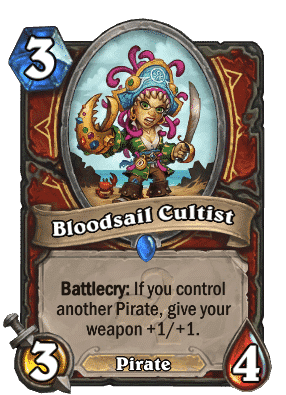
Pirate Warrior is one of Wild most iconic and established Aggro decks. The deck relies on minion pressure from Pirates and combine them with high damage weapons to finish off the opponent. Ancharrr is often the main draw engine, but the deck usually doesn’t need draws to finish its job.
Pirate Warrior clawed its way back into Tier 2 after the sole inclusion of Sword Eater. Although a 4-mana minion, Sword Eater solves many problems related to deckbuilding. Sword Eater generates a weapon by itself, so the Warrior doesn’t need to include many weapons and can focus on an Ancharrr buildaround. It also has Taunt to protect your face in an Aggro rat race. A couple of Wrenchcalibur can still be played if you see many Reno Priests.
Pirate Warrior is a decent deck that does okay but not spectacular against most decks. If you want steady result, you can’t go wrong with the good ol’ Patches gang.


Galakrond Warrior
Ranked: 20 (+5)
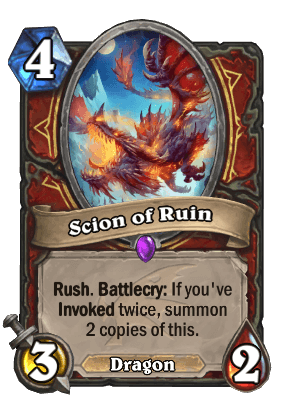
Tempo Galakrond Warrior, as the name suggests, is a midrange deck that wins by outtempoing the opponent in the mid-game. This version of Tempo Warrior relies on the Galakrond core that keeps boosting the hero’s attack as it piles up its Invoke count. The warrior can secure the victory by playing overstatted minions that are drawn from Galakrond on top of its previously generated tempo.
Galakrond picked up in playrate again as it’s received some new cards. The nerf to Corsair Cache means that it’s no longer worth playing in Galakrond Warrior, so players are moving away from the Ancharrr build and into mini-Menagerie build. Galakrond Warrior has already played a good Dragon in Scion of Ruin, early game Pirates, and good Mechs for a Bomb package, so slotting Ringmaster Whatley for additional draw feels like a no brainer. The Baton is much too slow and directly clashes with other weapons in the deck, though.
The main reason to play Galakrond Warrior now is to perform better against Reno decks. Wrenchcalibur and Clockwork Goblin have become common inclusions, while Lorekeeper Polkelt helps a ton with the deck’s consistency, as it allows instant access to Galakrond on Turn 7. Make sure to not mindlessly play the card on Turn 4 though, and envision your plays a few turns ahead.
The nerf to Polkelt didn’t affect the deck as much as we thought it would, since Polkelt was just an aid card against Control to fish for Galakrond. Against decks like Reno Priest, playing a Polkelt one turn later didn’t really matter, whereas you can just exclude the card if you hope to gain percentage against Aggro.


TIER 3
CLASS META RANKING
Warlock
RANK 1 – 501 POINTS

Being the strong class with the strongest deck, Warlock is in its own league. The class has the healthiest profile of diversity in the meta, with an Aggro deck that cheat out 8/8s, an Aggro deck that refills itself to death, Control decks that cheat out Demons with Voidcallers, AND a Control deck that doesn’t cheat out Demons with Voidcaller.
Fast decks are king again, and that also holds true for Warlock. Darkglare Warlock is again our top Warlock deck, but it’s lost its edge against Reno Priest for not gaining anything meaningful. The deck is still very consistent if you do you self-damage maths correctly, so we definitely recommend giving it a whirl if you have the cards.
With the introduction of Wicked Whispers, Discard Warlock didn’t fall behind much in the power ranking. A crucial part in determining success in the meta is the highroll potential, and Whispers certainly amplifies that. Discard Warlock might still be slower than Darkglare Warlock, but with its added resilience and longevity, it’s a much better alternative if you’re looking to beat Aggro Druids.
Reno Warlock has always been a decent anti-aggro deck that’s fairly underplayed at the top meta (and possibly underrated, too). It has a combo that can beat Reno Priest and is naturally fine into Aggro Druid, Paladins, and Rogue with its plethora of removals and taunts. Reno Warlock didn’t get much besides Tickatus (which can arguably be cut), but it’s the faster meta that makes it shines. Watch out for Big Priests though.
With non-Highlander Control Warlock, the traditional demon cheating route is still the tried-and-true option. Cubelock can’t really play Tickatus, however, and hasn’t received much if at all in the past couple of expansions. The deck that actually gotten new stuff though, is good ol’ Control Warlock. You don’t cheat your big demons with Voidcaller, but rather reduce their cost with Free Admission and The Dark Portal. The deck plays Tickatus (which can be corrupted easily after discounted) with Felosophy for end-game milling. It’s a deck with lots of potentials.
New Demons like Fire Breather and Mon’ari Mosher has helped Demon Zoolock enough to make it relevant again. However, the deck is still far from achieving the power level needed for Wild (but at least you get to play obscure cards like Imp Gang Boss and Crystalweaver). We’ll have to wait another expansion for new development.
MAGE
RANK 2 – 389 POINTS
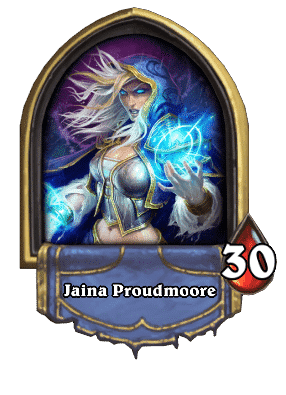
We all know Jaina can be pretty volatile. After jumping from 5th to 1st then almost back to 3rd, it seems like the RNGGod hasn’t been kind to Mage in Darkmoon Faire. The decimation of Time Warp Mage has left a gap too big for any new development in Secret Mage archetypes to cover. What’s more, some of the new additions to Mage are elemental buildarounds, and Elemental Mage is non-existent in Wild.
Regular Secret Mage has gotten so many new cards that they don’t even want half of the new secret synergies in the deck. New cards like Occult Conjurer and Rigged Faire Games round up Secret Mage’s card draw and board presence, but they’re a bit slow and don’t offer anything groundbreaking. Sayge is an amazing card, but it directly conflicts a card that already exists (Aluneth), and replacing a really good card with an amazing card only gets you a small buff.
Reno Secret Mage, on the other hand, gained a lot more. Already a deck with more defensive capabilities and staying power than Secret Mage, the Highlander version got offered even more synergistic cards to ensure its consistency, especially in the early game against other fast decks. Reno Secret Mage hovers around the top of Tier 2 for now, as it can’t find that little bit of extra power to sneak into Tier 1.
Galaxy Reno Mage is decent again thanks to the shift in the meta. Like Time Warp Mage, the deck is designed to beat decks that are slower than itself. With Time Warp Mage out of the meta, Galaxy Reno Mage finds much needed breathing space to dunk on other lighter Reno decks. There are new ways to build the deck now, with Elementals and N’zoth of the Deep being a few options, but we think the version that tops out at Tortollan is still the best one.
Both Time Warp and Reno Time Warp Mage has fallen to the wayside as the meta getting increasingly hostile to them and the accumulation of little nerfs has finally left an impact on these decks. Evocation is one of the best cards in the deck, and the fact it’s still being played at 2 mana says a lot about its power level. Evocation being 2 mana means Mage is less likely to win against Aggro though, which puts it among the likes of Togwaggle Druid and Linecracker Druid, combo decks that can’t deal with fast decks effectively.
PRIEST
RANK 3 – 333 POINTS
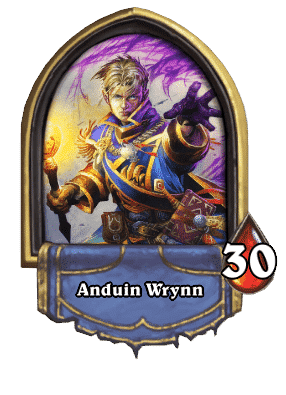
Priest is no longer a one trick class! With Big Priest entering the field (again), the class has doubled its diversity quota, and is now a two trick swinger. Big Priest is dominating the meta in terms of playrate, and it’s currently one of the most played decks in the format, right besides, you guessed it, Combo Reno Priest. Although Anduin can be seen in every corner, he doesn’t really do much apart from pinging you to death and making big taunts. The class as a whole is extremely powerful, but it has a severe variety issues to sort out before thinking of competing with Warlocks.
ROGUE
RANK 4 – 312 POINTS
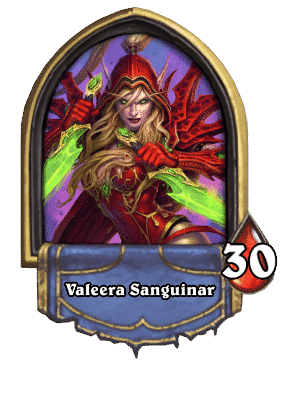
Rogue has finally gotten new, viable options that actually have potential. Aside from existing decks like Odd Rogue, Kingsbane Rogue, and Aggro Rogue, slower Rogue decks have actually sprouted to expunge Valeera’s title of ‘Mindless Aggro One-Trick’. Shuffle Rogue is a midrange deck that can pop off anywhere between Turn 1 and Turn 5, while Mecha’thun Rogue is taking on an Aggro shell to prolong the game until lethal.
Kingsbane Rogue is still strong against Control, and now is much better versus Aggro with the tempo cheat from Prize Plunderer and Foxy Fraud. The Stealth version has more board presence against Control, while the pure Pirate version can wrestle the board back with Cannon synergy. Whichever option you go for, Kingsbane Rogue is very well-rounded and is not just a Control bully like it used to be. Beware of Paladins, though.
Odd Rogue wasn’t given anything and has slipped to Tier 2. Slaying Reno Priest is Odd Rogue’s specialty, and punishing unrefined decks is its pastime. Most Tier 2 decks and below are delicious prey for the ever-consistent Baku deck. Although Big Priest can be a major problem without Vilespine Slayer, it actually helped Odd Rogue by keeping the Odd Paladin population in check. Aggro Druid is much easier to deal with when you have a crazy Tour Guide opening, but Odd Paladin? Not so much.
Aggro Pirate Rogue saw a massive resurgence on the back of Combo synergies. Pirate Rogue ticks three of the major boxes for a good Aggro deck: great highroll potential, consistent early game, and lots of refill. Maybe it’s still not as efficient as Odd Paladin or deals as much damage as Odd Demon Hunter, but it’s still worth trying out. If you don’t feel like you can bash the opponent in the head fast enough, you can always put Mecha’thun in your deck and turn your Tier 2 deck into a Tier 3 meme. The highlights are probably more than worth it, at least.
Shuffle Rogue is one of the most exciting archetypes to come out of Darkmoon Faire. Ticket Master has boosted Stowaway’s consistency tremendously as the deck doesn’t need to consistently hit Fal’dorei Strider on 4 anymore. This new deck is a very modern iteration of Miracle Rogue albeit with much more board presence, in that you can still make a massive Edwin van Cleef as early as Turn 1 or cheese the game until you can burn with Shadowstepped Leeroys and Eviscerates. It turns out that 14/14 Edwins on Turn 1 wins game in both Standard and Wild.
DRUID
RANK 5 – 265 POINTS
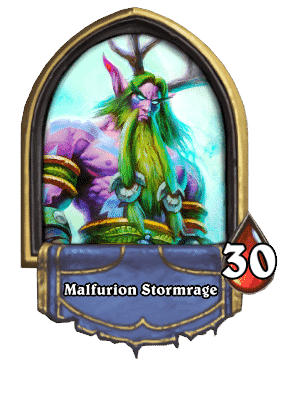
Druid was a major winner this expansion, until Reader got hit. Nevertheless, with many other classes severely weakened and the top two classes fallen prey to Malfurion’s strategies, Druid has climbed a few spot to become the 5th strongest class in Darkmoon Faire.
Aggro Druid is one of the few true Aggro deck of the meta, and is a deck you can play when you’re not sure which deck to play. Its all-in nature means it doesn’t have any auto lose matchups, and its explosive power means most decks can’t deal with its autowin hand right now. The deck is also very straightforward to play and saves you a lot of time whether you win or lose. Although it’s now nerfed and barely sees play, we think that it’s way too underrated. It should pick up in playrate again once players find out it’s still good.
PALADIN
RANK 6 – 236 POINTS
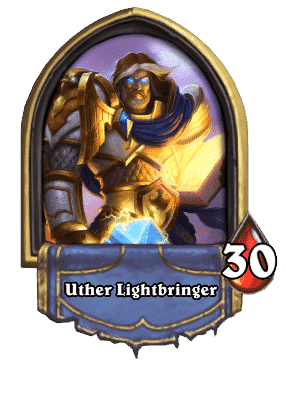
One thing hasn’t changed about Paladin all these years: Odd Paladin still reigns supreme. However, lots of the other stuff are up in the air. With access to decks like Libram Paladin, Handbuff Paladin, Mechbuff Paladin, Murloc Paladin, Recruits Paladin, and Midrange Paladin, Uther has access to the most varied assortment of generic midrange decks of all the classes.
Odd Paladin is one of the best Midrange decks right now, and it’s easy to understand why. The deck has the best board-generation Hero Power in the game, and is the best Hero Power for Tour Guide across all game modes. If there’s a deck that can perform remarkably decently 99 out of 100 games, this is the deck. Odd Paladin is the garbage-proof for the class so that it never suffers from a gruesome fate like that of Hunter. Barker and Lothraxion gives the deck even more staying power against Control, but they aren’t that good against Aggro, so you don’t really need too many new cards if you want to keep playing this archaic deck. Oh My Yogg seems like a must, though.
With the addition of Yrel, it might that there might be some reason to play Pure Libram Paladin. However, the Pen Flinger might still be superior since they have ways to actually finish the game. The Holy Wrath version is dead along with the Polkelt nerf, so the matchup against Reno Priest is close to unwinnable now. It’s not a good meta for a slow high-value midrange deck, though, as combo decks like Reno Priest and Malygos Druid are rampant, Big Priest won’t ever let you through, and Control Warrior scattering like swatted flies. If you see these decks, Murloc Paladin is a much better option; however, it kinda sucks against Aggro. Or if you want the middle-ground between the two while still retaining the possiblity of randomly hitting people for 20 damage, a Midrange Paladin with the Thekal/Giant + Lorekeeper/Holy Wrath package might be a good pick.
Mech Handbuff is in shambles, with Replicatron being its only change in ages. Replicatron is a really annoying minion, especially when buffed and magnetized on. It’s a very sticky and undoubtedly powerful minion that also acts as a late-game powerhouse; however, it doesn’t solve Handbuff’s weakness to silence effect. Handbuff Paladin emerges to solve this problem by spreading the buff over to different utility minions, so they are way less susceptible to Silence. The big problem with Handbuff is that the minions are pretty garbage when not buffed. If you find yourself playing 1/3 Vicious Scalehide and 3/2 Chillblade Champion, it’s probably time to change decks.
Pure Recruits Paladin is the last deck in the list, utilizing all the new cards that synergize with Silver Hand Recruits without caring about whether they’re Odd or Even-costed. The deck is sticky and it has a little bit of reach with Lightforged Zealot, but it’s often too slow for Wild. It’s worth giving it a whirl, though, if you want to reminisce the days when Dude Paladin was the undisputed king of the Wild.
WARRIOR
RANK 7 – 225 POINTS
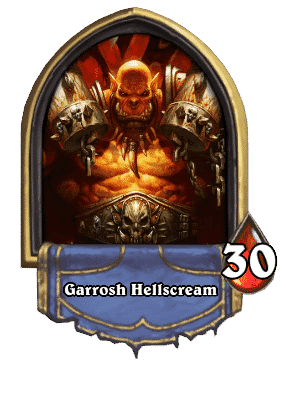
A diverse meta is not a good meta for Garrosh. Warriors like to target as few things as possible, and it’s hard to counter the meta when there are too many decks being played. Odd Warrior handles Aggro very well, Bomb Warrior and Galakrond Warrior slay Reno decks, Pirate Warrior can hand justice to Quest Mages. But none of them can do all three. Or can they?
The fall of Bomb Warrior is pre-determined. Although Reno Priest is still the strongest deck on ladder, it’s playrate is far from the whopping 30% we’ve seen during the Darkglare meta. Bomb Warrior is only especially good against Reno Priest and somewhat good against Reno Mage, but struggle a lot more versus Reno Warlock who can put up taunts. It’s a decent deck against Aggro but not to the point choosing it over other anti-aggro decks is a no-brainer. These reasons and the fact that Bomb Warrior has received zero new card pushed the deck way down to the Middle of Tier 3 and into oblivion.
Moving the opposite direction is Galakrond Warrior. The deck was exceptionally bad because it was out-tempoed by both Kingsbane Rogue and Darkglare Warlock. Right now, it can target slow Control decks with its ability to churn out damage and close out games, something that Bomb Warrior isn’t particularly good at. And it can shut down Reno decks just as well! The full Menagerie version with Baton was largely a failure, but Ringmaster Whatley is still worth a slot for its powerful refill potential.
Odd Warrior and Dead Man’s Hand Warrior are two decks that occupy somewhat similar niches, so they’re at similar spots right now. Odd Warrior is more resilient, more consistent, and generally more reliable than Dead Man’s Hand against Aggro. Dead Man’s Hand Warrior can win some spectacular games, and is much better against combo decks like Druids and decks like Renolock. If you manage to dodge Big Priest, both decks are decent getting Legend day 1 when there are a whole lot of Aggro around. This means perfect Rank 1 Legend screenshots, just when it matters the least. But who cares? They don’t label the date on the pictures.
The ol’ reliable Pirate Warrior got a good buff in Sword Eater, a card that provides both face damage, a strong body, and protection against other Aggro deck. The only thing about Sword Eater is that it’s a bit on the costly side, but it’s well worth the cost for what it can do. Because Sword Eater gives a free weapon along with the body, the most popular Pirate Warrior version is reverting back to playing An’charrr as the only weapon to buff it up and draw endless pirates.
As per usual, the best is saved for last. ETC OTK Warrior is a super cool deck with a surprisingly consistent win condition. It plays the same defensive shell as DMH Warrior, but since it has an actual OTK, games end faster and it has a lot more potential to grow. You need to give your minion rush and you need targets to ram them into, but that’s where Dirty Rat comes in and does his job. It’s pretty decent against combo decks too, so that’s a plus. Just make sure you stay away from Big Priests, because you’ve probably lost once you started a game versus one.
SHAMAN
RANK 8 – 180 POINTS
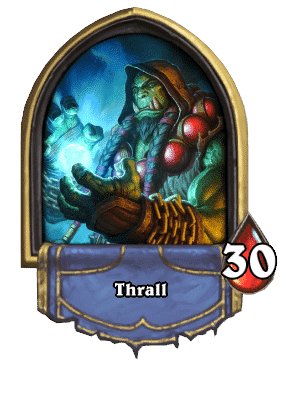
Like Mage, Shaman has been pretty neglected this expansion, with only a few boosts to their weaker archetypes. Unlike Mage, Shaman doesn’t have a solid enough foundation, so it’s slid down the tierlist as quickly as a Warsong Commander after a nerf. Most of their decks have plummeted in ranking—a fair reflection of their power level—and the sole rise of Evolve Shaman is not nearly enough to save a dying class.
Big Shaman is fallen out of favor as the minion-cheating deck of choice as big bad Big Priest re-enters the ring. Compared to Priest, Big Shaman is only slightly better against Aggro, while worse against everything else. Even Shaman (aching that they didn’t make Ey’sor 2 mana) is less good against Warlocks and Mages, but they generally perform better against other Midrange decks and Reno decks. The matchup spread of these two decks are very similar, however, so either of them are decent options for laddering. Failure to attain any new card means that both decks fell to low Tier 2, yearning for anything that can stop their downward spiral.
Similarly, Odd Shaman doesn’t like any of the new options. It doesn’t generate totems quickly enough for Ey’sor to be effective, and Inara Stormcrash synergizes way better with decks like Aggro Shaman. It’s quickly fallen off the map as it’s unable to deal with decks faster than it as well as before. Aggro Shaman today are trying to build around Doomhammer and Inara, but whether that’s better than the spell-based version is to be seen.
Evolve Shaman is the only deck that can effectively use many of the best cards Shaman has gotten this expansion. With Revolve and especially Cagematch Custodian, Evolve Shaman make huge boards more consistently than ever. The deck has changed a little bit to build around one of the best cards in the deck, the Boggspine Knuckles, which means Pirates like Dread Corsair and Hoard Pillager are played. If you don’t think Evolve Shaman is an attractive enough option, you might want to know that there’s an achievement for Revolving 14 minions.
Reno Shaman has proved that it’s not yet obsolete, as Paradox took it to Rank 1 Legend two months in a row. The deck has enough stall and disruption to win odd games, but we wouldn’t consider it a worry-free option for laddering. But at least it’s better than pure Shudderwock Shaman at the moment.
HUNTER
RANK 9 – 108 POINTS
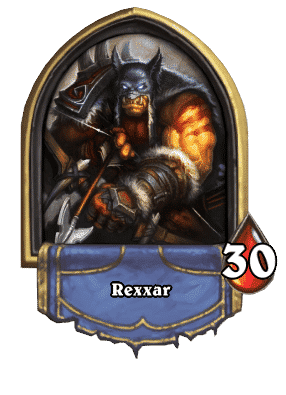
the bottom two classes are a distance away from the others, and from viability in general. With Hunters, things don’t look all the grim even with the surprising nerf to Brann. However, traditional Reno Hunter is old news. Deathrattle Hunter with Jewel of N’zoth and Maxima Blastenheimer is now the truth.
Aggro Highlander Hunter is effectively deleted with the nerf to its two key cards: Polkelt and Brann, while Midrange Highlander Hunter is severed. However, as surprising as it might sound, the Brann nerf might not be a nerf after all. Even Highlander Hunter was a laughingstock before the ‘nerf’ because of a lack of win condition, but an 8-mana Brann provides just that. It can play the Aggro game or it can be tech-ed against Reno Priest with a heavier curve and cards like Wild Bloodstinger. Along with other strong Highlander cards and Hunter class cards, it’s actually looking like an actual meta-viable deck.
Deathrattle Hunter is one of the strongest Huntr decks and one that shows the most potential. The deck is like a scuffed Big Priest, but Big Priest itself is pretty strong. It has a pretty good balance between offense and defense, being able to cheat out big taunts as early as Big Priest can and reload its board several times. It has an edge against Big Priest in head-to-head, though: Sylvanas Windrunner swings the board exceptionally well when there’s only a big minion on the other side. This means Deathrattle Hunter is also unconventionally good against Warlocks and all other Control decks that employ huge taunts.
Secret Hunter is another deck that has gotten massive buffs. It can produce very consistent tempo in the early game, but the main problem still persists: those tempo rarely transfer into pressure. Therefore, Secret Hunter can be a very good deck versus other Aggro, but can’t hold its own versus decks that spend time setting up like. . . the Top 2 decks currently.
Even Hunter’s playrate dropped significantly when Time Warp isn’t around. The deck was only really good at disposing Darkglare and Time Warp Mage, and now it has lost both major targets to bully. Even Hunter struggles to beat Priests unless it goes really heavy, but as with many other decks, you don’t win against Aggro anymore if you beef up. Odd Hunter is a very good deck for bullying Mages and Warlocks, and it’s surprisingly not that bad against other Aggro too, with all the new cards designed for early board control. However, it still needs to up its percentage by a couple in all matchups to be considered a legit deck. Beast Hunter has gotten some new stuff, but let’s be honest, nobody is getting pumped about Dancing Cobra and Don’t Feed the Animals!
DEMON HUNTER
RANK 10 – 96 POINTS
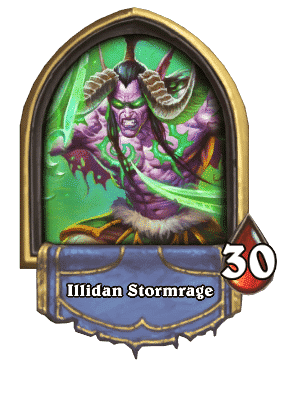
Despite some pretty big inclusions, Demon Hunter has been pushed to the last spot following the recent round of nerfs. Although its main player Odd Demon Hunter is still firing hot, Aggro Demon Hunter and Soul Demon Hunter has been crippled by nerfs to their key cards, Voracious Reader and Shardshatter Mystic.
Odd Demon Hunter has been revived! And since Odd Demon Hunter is all Illidan has, Demon Hunter has been revived! Demon Hunter has always been a hyper aggro class, and with cards like Acrobatics printed, it’s just cemented this position even more.
With the draw power from Acrobatics and Stiltstepper, Odd Demon Hunter is able to play a much lower curve and win much more often in the early game. In the damage output department, Demon Hunter has also made significant progress. Stiltstepper is 4 extra damage more often than not. Intrepid Initiate couples up with Demon Companion for a bloodthirsty Turn 2. Pen Flinger is also a tech option along with all the cheap spells. Even with the , the deck has regained its position as one of the premier Aggro decks in the format.
Aggro Demon Hunter is like that little sibling that lives in the shadow of its big brother its whole life, but it actually can hold its own pretty well. Employing a Pirate package, its curve is naturally low enough to cycle with Acrobatics and Stiltstepper. It can also solidify its early game better than Odd Demon Hunter if you hit a good Pirate hand, either with Cannon or with Parachute Brigade. The deck is a bit redundant at the moment, though, since Odd Demon Hunter has the exact same playstyle but is a little bit more effective.
Soul Demon Hunter takes on an identical shell to its Standard counterpart, incorporating a Il’gynoth Lifesteal package to get through taunt. With a good roll from Skull of Gul’dan, Brann can deal 20 damage or more when played alongside a couple of Soulshard Lapidaries. Brann also works remarkably well with Pen Flinger and Loatheb. Because there are so many better taunts in WIld, a variety of cards are used to bypass them, like Kayn Sunfury, Magehunter, or Magtheridon. It’s hard to play both the full Soul package and the Lifesteal package though, so some version has to cut all the Taunt bypasser for Moarg and more Lifesteal cards. Alternatively, you can just play the pure Il’gynoth OTK version, but it’s not as good in Wild.
Deck Codes (other Decks)



























































CONTACT
You might also be interested in...
Submit your Top 500 Legend Build, be seen by thousands of people!
Check out the Bazaar "the first free to play Hero-Builder for PC and Mac" Beginner's Guide! https://bazaar-builds.net/the-ultimate-beginners-guide-to-the-bazaar-tips-strategies-and-more/






